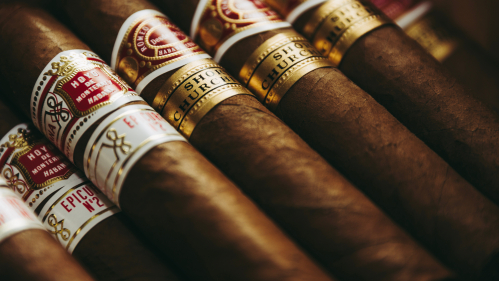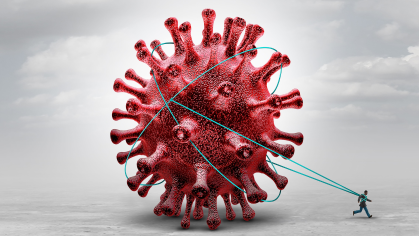Health Effects of Premium Cigars Impacted by How Often They are Smoked and Depth of Inhalation

Several experts at the Center for Tobacco Studies at Rutgers participated in Premium Cigar Study by the National Academies of Science, Engineering and Medicine funded by FDA and NIH
What is a “premium cigar” and how do they affect people's health differently than other cigars or cigarettes?
Experts at the Center for Tobacco Studies at Rutgers were part of a National Academies of Sciences, Engineering and Medicine committee commissioned by the Food and Drug Administration and the National Institutes of Health to address these questions.
Cristine Delnevo, director of the Center for Tobacco Studies, discusses the committee’s recently published report Premium Cigars Patterns of Use, Marketing, and Health Effects, which cites her extensive research on patterns of cigar use and the important role of policy in addressing health concerns.
What makes a cigar “premium”?
There is no accepted legal definition of a premium cigar. To guide the committee’s work, we identified a set of characteristics that made a cigar “premium”: it is handmade, contains filler composed of at least 50 percent natural long-leaf filler tobacco, is wrapped in whole-leaf—not reconstituted—tobacco, weighs at least 6 pounds per thousand, has no filters or tips and has no characterizing flavor other than tobacco.
Are premium cigars as harmful as cigarettes?
Since the toxic and carcinogenic constituents are the same, premium cigars are capable of causing adverse health effects, such as heart disease; lung, bladder and head or neck cancer; chronic obstructive pulmonary disease; and periodontal disease. There is also concern that occasional premium cigar use could lead to acute cardiovascular disease in users with underlying heart conditions.
The health effects depend on how frequently they’re used, how long people use them and how deeply they inhale. In general, however, most people who smoke premium cigars are occasional users and inhale less intensely.
However, adding flavors to premium cigars could make them more appealing to nonusers—especially young people—and promote more frequent use, which would increase the nicotine intake, addiction potential and exposure to carcinogenic material.
Who is using these products?
About 1 percent of the U.S. adult population smokes premium cigars. The majority are older white males of higher socioeconomic status, not youth.
While use is currently low, this could change if there are changes in regulations in one or more tobacco products, if price changes, if marketing practices and consumer perceptions change, or if the products are modified, such as if favors added.
What are some of the other findings?
We found that premium cigars are marketed online via social media platforms as well as at festivals, and in cigar lifestyle magazines. However, additional research is needed to understand the extent of messages being promoted on these platforms, and about perceptions of consumers about premium cigars in general.
What were the committee’s recommendations?
The committee recommends more research, which could lead to a better understanding of premium cigar use, marketing and perceptions, and health effects over time. This will help inform evidence-based policies, programs and regulations aimed at improving health outcomes.
Andrea Villanti, deputy director of the Center for Tobacco Studies and an associate professor at the Rutgers School of Public Health also served on the committee. Michelle Manderski, Ollie Ganz and Julia-Chen Sankey at the Rutgers School of Public Health contributed to a commissioned paper.


